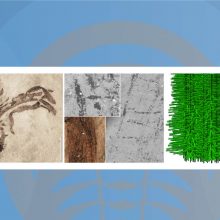
Photo from archive.org
Abstract. New fossil material of Auliscomys formosus Reig 1978 allows restudy of the oldest known South American representative of the subfamily Sigmodontinae. Description of Auliscomys formosus was based on a… Click to show full abstract
Abstract. New fossil material of Auliscomys formosus Reig 1978 allows restudy of the oldest known South American representative of the subfamily Sigmodontinae. Description of Auliscomys formosus was based on a fragmentary dentary exhumed from the Monte Hermoso Formation of central Argentina. Previous studies allocated A. formosus to the early Pliocene. A reevaluation of dental and cranial morphology, including for the first time the upper dentition, and the inclusion of A. formosus in a phylogenetic analysis of the tribe Phyllotini indicate that A. formosus represents a new genus, Kraglievichimys. Kraglievichimys shares a mosaic of characters with the living Auliscomys Osgood, 1915 and Loxodontomys Osgood, 1947. The taxonomic reassignment of A. formosus and the possibility that the Monte Hermoso Formation may be younger than early Pliocene in age provide a new understanding of cricetid diversification in South America. Estimates of sigmodontine ancestry by molecular approaches are biased toward older ages, whereas this new interpretation of the history of K. formosus suggests that the South American history of sigmodontines spans less than 4 million years.
Journal Title: Journal of Paleontology
Year Published: 2018
Link to full text (if available)
Share on Social Media: Sign Up to like & get
recommendations!